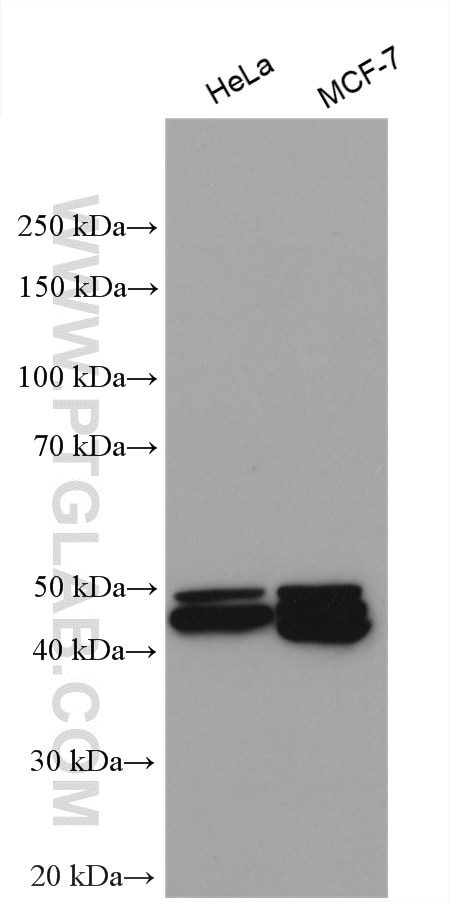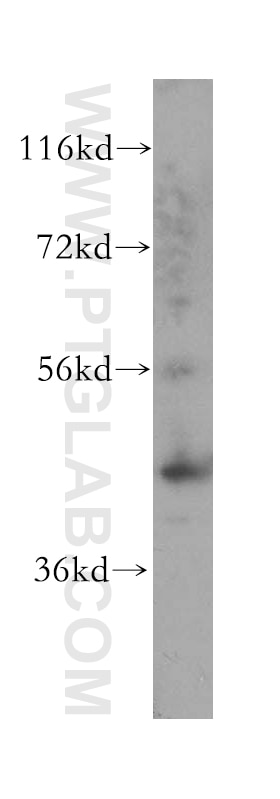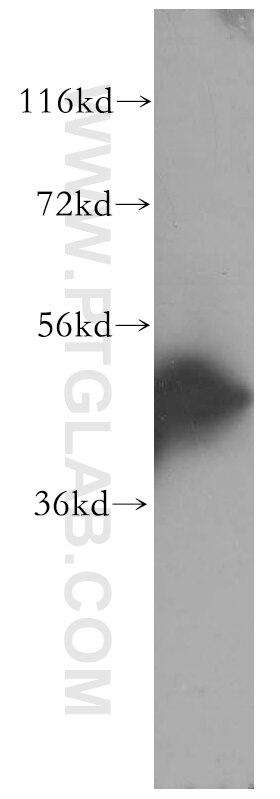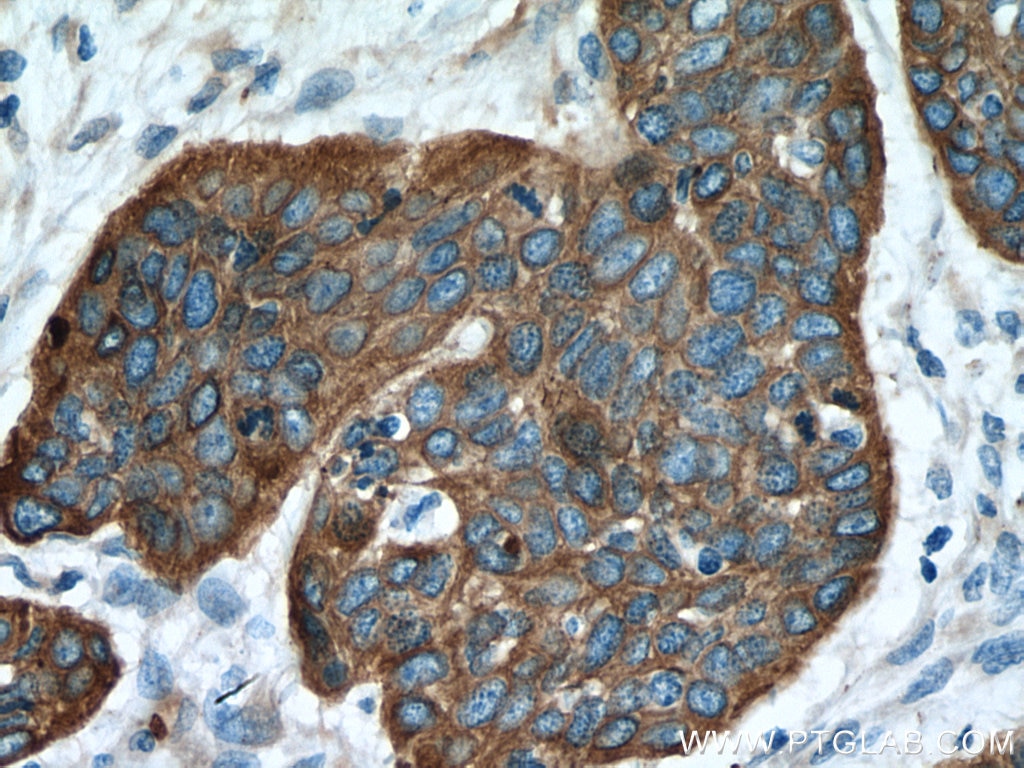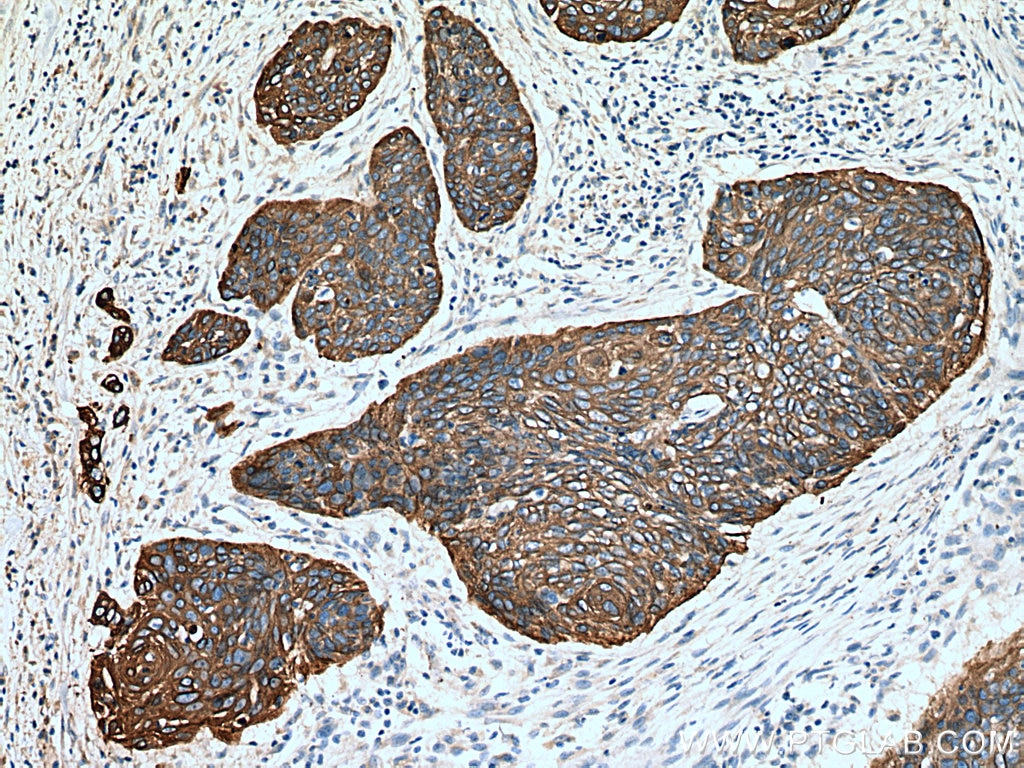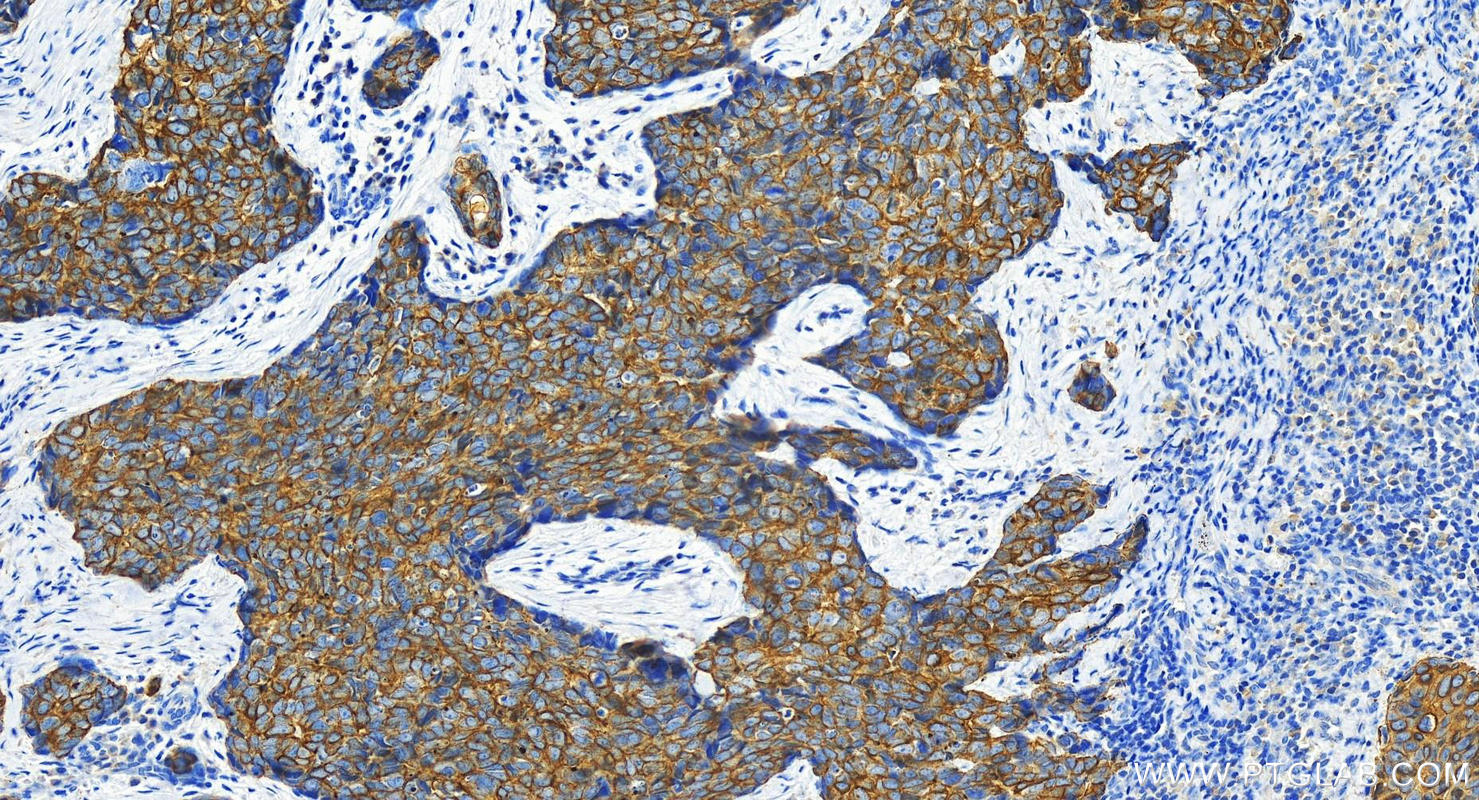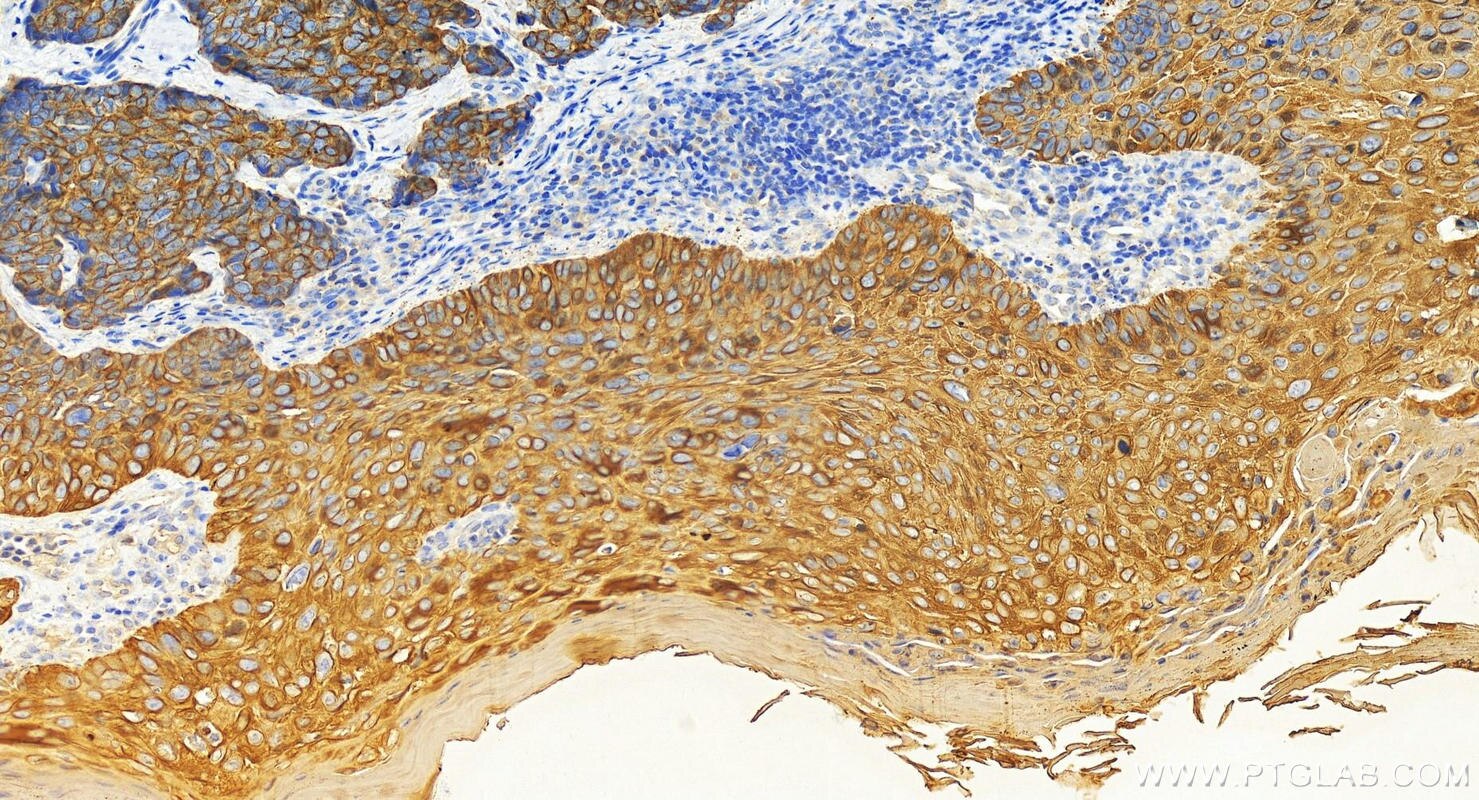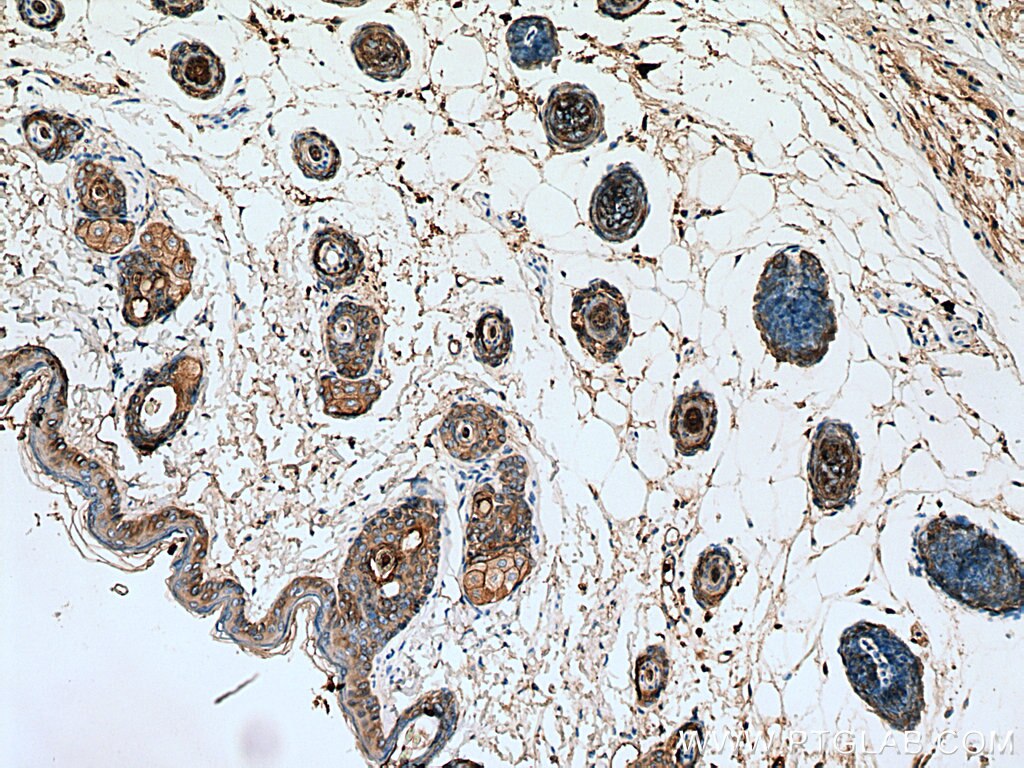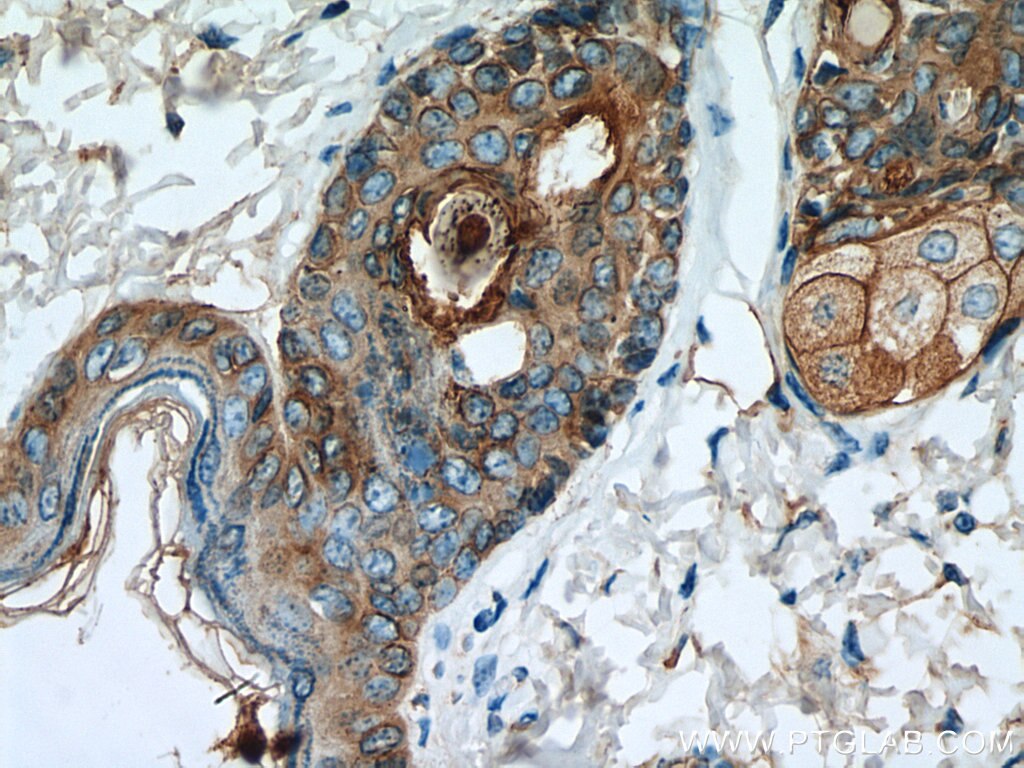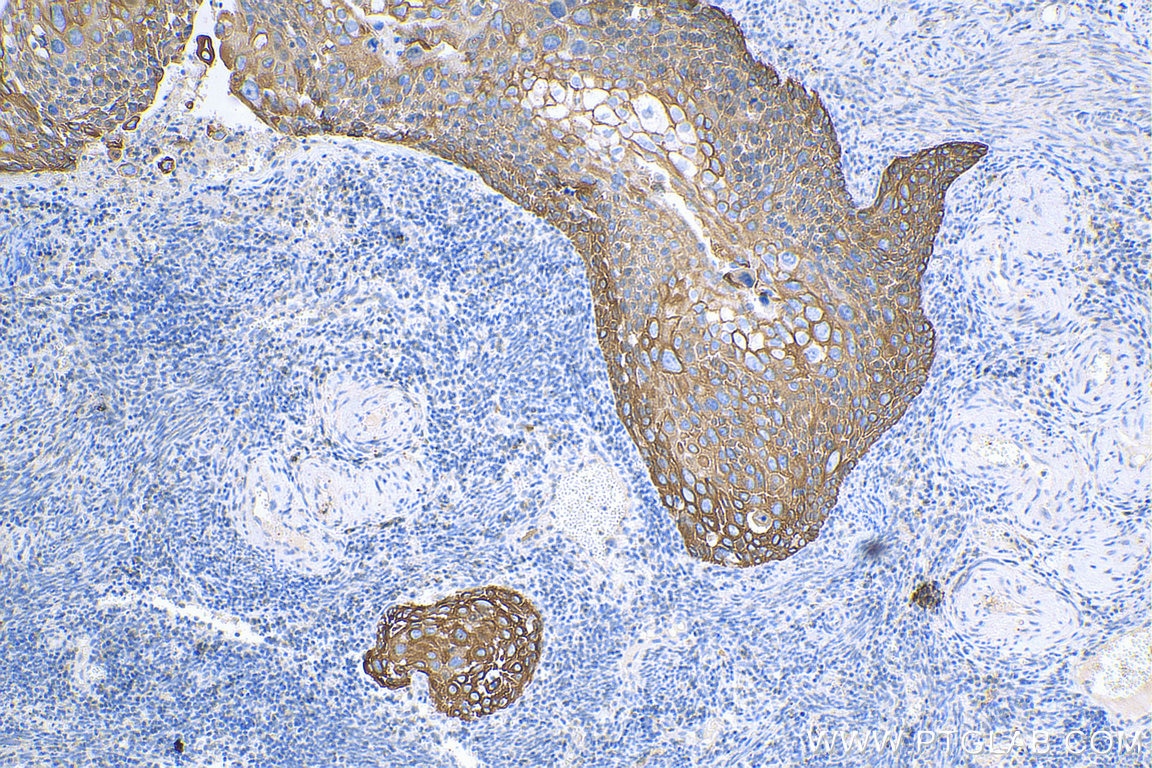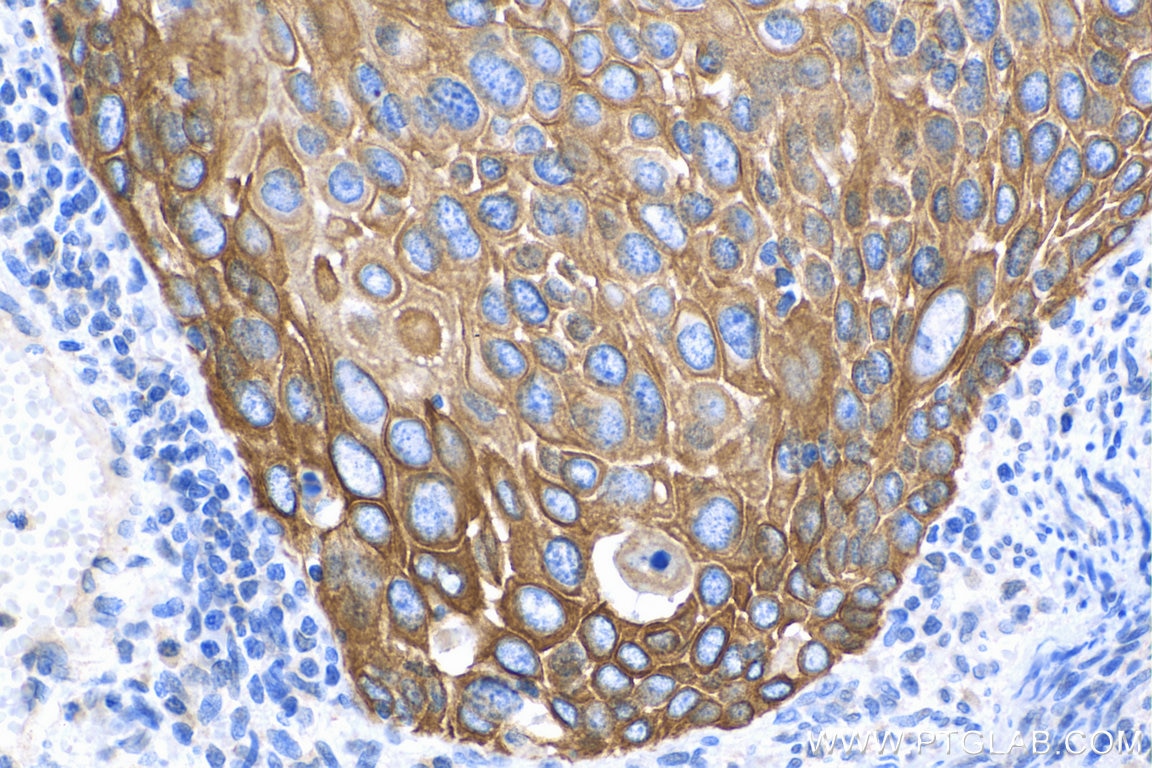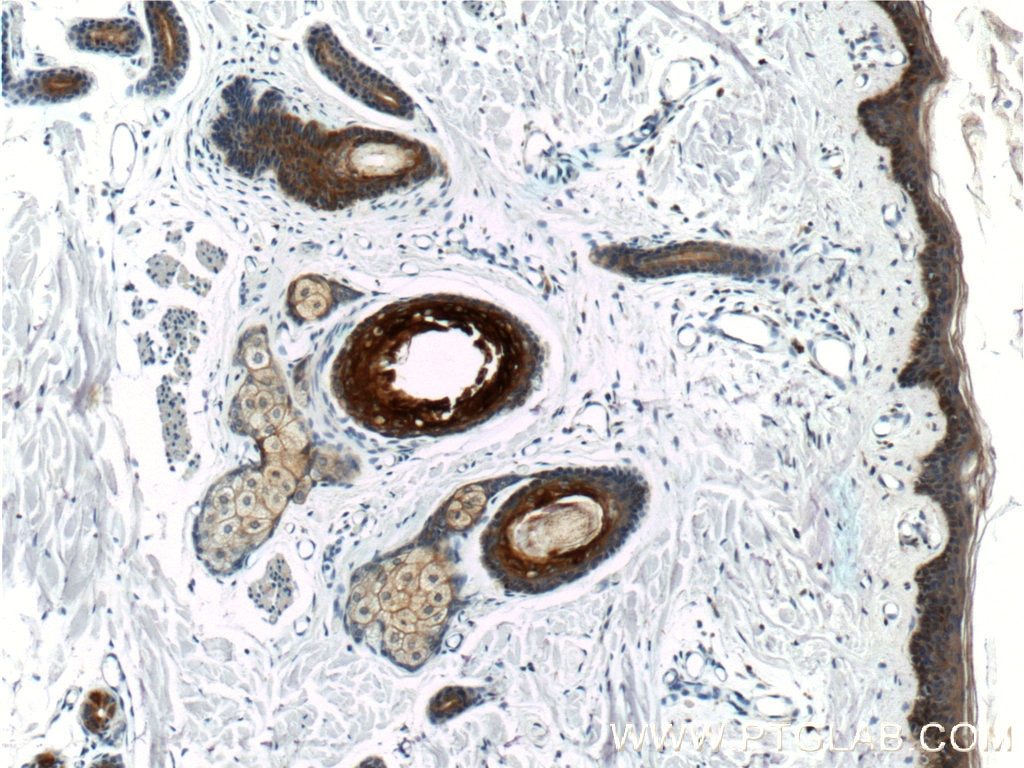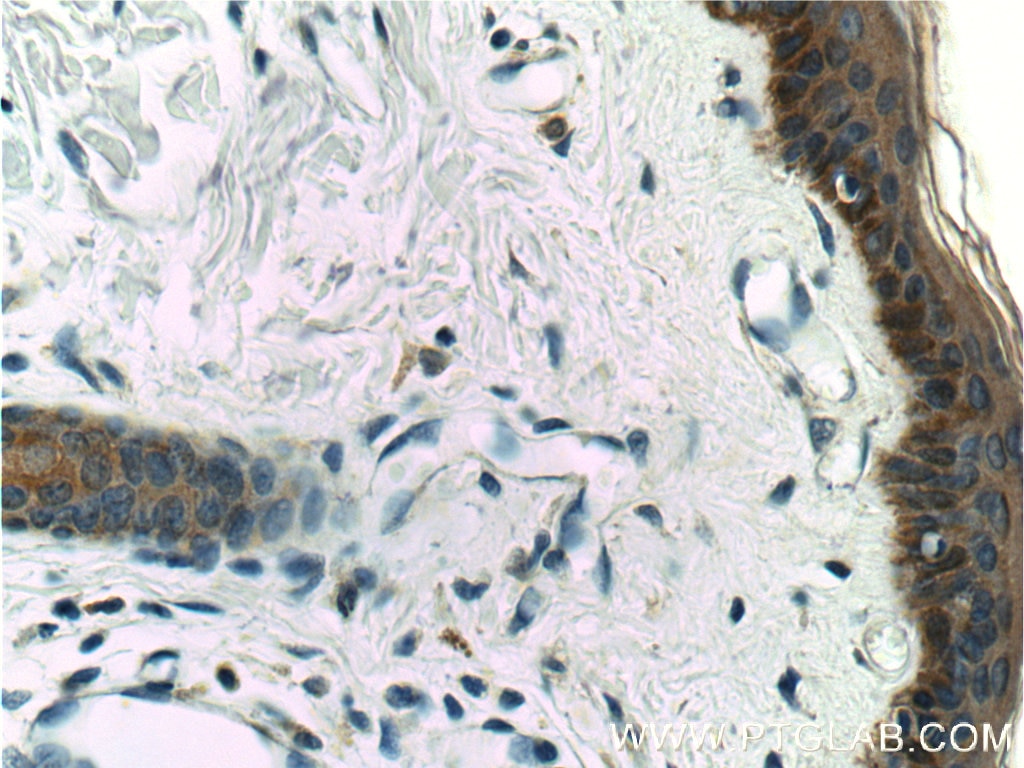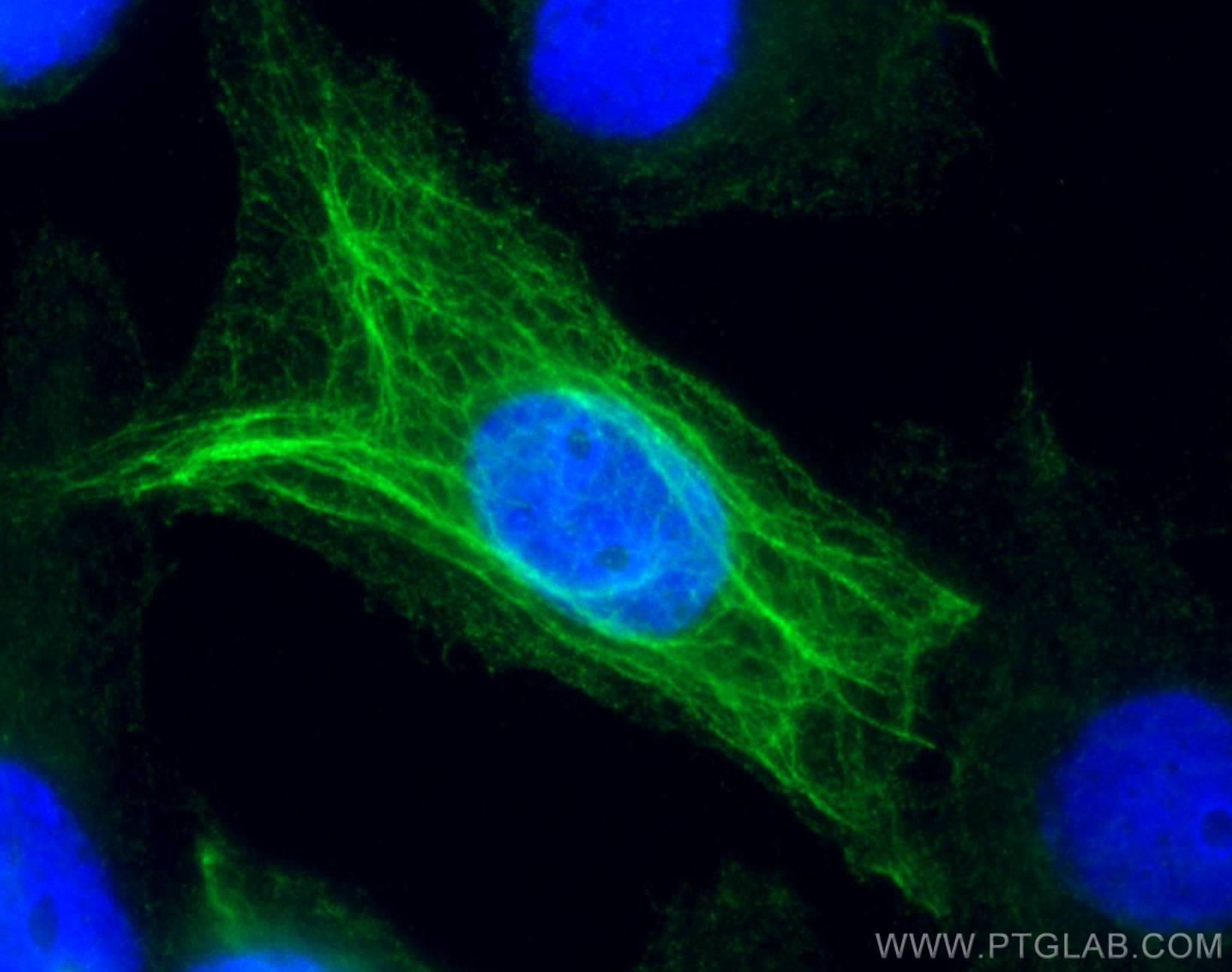Tested Applications
| Positive WB detected in | HeLa cells, A375 cells, MCF-7 cells |
| Positive IHC detected in | human oesophagus cancer tissue, human bowen disease, human cervical cancer tissue, human skin tissue, mouse skin tissue Note: suggested antigen retrieval with TE buffer pH 9.0; (*) Alternatively, antigen retrieval may be performed with citrate buffer pH 6.0 |
| Positive IF/ICC detected in | A431 cells |
Recommended dilution
| Application | Dilution |
|---|---|
| Western Blot (WB) | WB : 1:5000-1:50000 |
| Immunohistochemistry (IHC) | IHC : 1:500-1:2000 |
| Immunofluorescence (IF)/ICC | IF/ICC : 1:50-1:500 |
| It is recommended that this reagent should be titrated in each testing system to obtain optimal results. | |
| Sample-dependent, Check data in validation data gallery. | |
Published Applications
| WB | See 4 publications below |
| IF | See 5 publications below |
Product Information
17265-1-AP targets Cytokeratin 16 in WB, IHC, IF/ICC, ELISA applications and shows reactivity with human, mouse samples.
| Tested Reactivity | human, mouse |
| Cited Reactivity | human, mouse |
| Host / Isotype | Rabbit / IgG |
| Class | Polyclonal |
| Type | Antibody |
| Immunogen |
CatNo: Ag10999 Product name: Recombinant human KRT16 protein Source: e coli.-derived, PGEX-4T Tag: GST Domain: 121-473 aa of BC039169 Sequence: MQNLNDRLASYLDKVRALEEANADLEVKIRDWYQRQRPSEIKDYSPYFKTIEDLRNKIIAATIENAQPILQIDNARLAADDFRTKYEHELALRQTVEADVNGLRRVLDELTLARTDLEMQIEGLKEELAYLRKNHEEEMLALRGQTGGDVNVEMDAAPGVDLSRILNEMRDQYEQMAEKNRRDAETWFLSKTEELNKEVASNSELVQSSRSEVTELRRVLQGLEIELQSQLSMKASLENSLEETKGRYCMQLSQIQGLIGSVEEQLAQLRCEMEQQSQEYQILLDVKTRLEQEIATYRRLLEGEDAHLSSQQASGQSYSSREVFTSSSSSSSRQTRPILKEQSSSSFSQGQSS Predict reactive species |
| Full Name | keratin 16 |
| Calculated Molecular Weight | 473 aa, 51 kDa |
| Observed Molecular Weight | 48 kDa |
| GenBank Accession Number | BC039169 |
| Gene Symbol | Cytokeratin 16 |
| Gene ID (NCBI) | 3868 |
| RRID | AB_2132894 |
| Conjugate | Unconjugated |
| Form | Liquid |
| Purification Method | Antigen affinity purification |
| UNIPROT ID | P08779 |
| Storage Buffer | PBS with 0.02% sodium azide and 50% glycerol, pH 7.3. |
| Storage Conditions | Store at -20°C. Stable for one year after shipment. Aliquoting is unnecessary for -20oC storage. 20ul sizes contain 0.1% BSA. |
Background Information
Keratins are a large family of proteins that form the intermediate filament cytoskeleton of epithelial cells, which are classified into two major sequence types. Type I keratins are a group of acidic intermediate filament proteins, including K9-K23, and the hair keratins Ha1-Ha8. Type II keratins are the basic or neutral courterparts to the acidic type I keratins, including K1-K8, and the hair keratins, Hb1-Hb6. Keratin 16 is a type I cytokeratin. It is paired with keratin 6 in a number of epithelial tissues, including nail bed, esophagus, tongue, and hair follicles.
Protocols
| Product Specific Protocols | |
|---|---|
| IF protocol for Cytokeratin 16 antibody 17265-1-AP | Download protocol |
| IHC protocol for Cytokeratin 16 antibody 17265-1-AP | Download protocol |
| WB protocol for Cytokeratin 16 antibody 17265-1-AP | Download protocol |
| Standard Protocols | |
|---|---|
| Click here to view our Standard Protocols |
Publications
| Species | Application | Title |
|---|---|---|
Phytother Res Epigallocatechin-3-gallate promotes wound healing response in diabetic mice by activating keratinocytes and promoting re-epithelialization | ||
Immunity Skin immune-mesenchymal interplay within tertiarylymphoid structures promotes autoimmunepathogenesis in hidradenitis suppurativa | ||
Cell Rep Med Co-targeting BMI1 and MYC to eliminate cancer stem cells in squamous cell carcinoma | ||
Invest Ophthalmol Vis Sci Expression Distribution of Keratins in Normal and Pathological Corneas and the Regulatory Role of Krt17 on Limbal Stem Cells | ||
Front Pharmacol Protective effect of Saussurea involucrata polysaccharide against skin dryness induced by ultraviolet radiation | ||
Invest Ophthalmol Vis Sci Modeling Neuropathic Corneal Pain: Pulled Nerve Approach With Elevated Krt16 Gene Expression |

